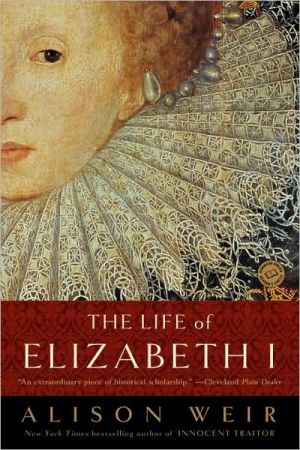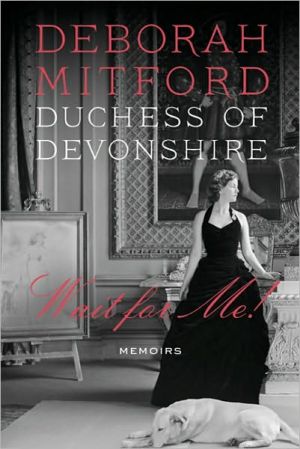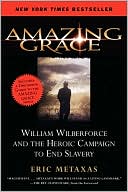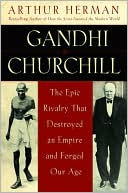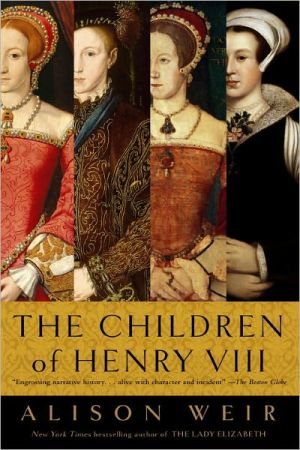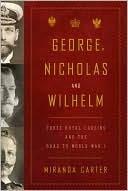The Life of Elizabeth I
Perhaps the most influential sovereign England has ever known, Queen Elizabeth I remained an extremely private person throughout her reign, keeping her own counsel and sharing secrets with no one—not even her closest, most trusted advisers. Now, in this brilliantly researched, fascinating new book, acclaimed biographer Alison Weir shares provocative new interpretations and fresh insights on this enigmatic figure.\ Against a lavish backdrop of pageantry and passion, intrigue and war, Weir...
Search in google:
Perhaps the most influential monarch ever to rule England, Queen Elizabeth I is at once the best- and least-known of queens. She was a very private person, leaving even her advisors wondering at the motivations for many of her decisions and actions. In her new book, The Life of Elizabeth I, Tudor authority Alison Weir tackles many of the mysteries that have for centuries surrounded Elizabeth: Was she somehow involved in the murder of the Earl of Leicester's wife? Was she really a "Virgin" Queen? Was her decision not to marry tied to the fate of her mother, Anne Boleyn? Publishers Weekly Weir describes herself as a social historian but admits that when chronicling the lives of the flamboyant Tudors, it's impossible to keep domestic politics and world affairs apart. One could hardly ignore the threatened depredations of the "invincible" Spanish Armada or pass over the intrigues of Mary Queen of Scots as she struggled to seize the throne and return England to Roman Catholicism. Weir has already negotiated the complex matrimonial life of Elizabeth's father in The Six Wives of Henry VIII and the early lives of the resulting progeny in The Children of Henry VIII. After a lonely and often perilous childhood during which Elizabeth was once imprisoned in the Tower and was nearly executed at the behest of her half sister, Queen Mary, 25-year-old Elizabeth ascended to the throne when Mary died. The prevailing expectation was that she would speedily marry a strong man who would then take over as king: as Elizabeth herself admitted, it was commonly thought that "a woman cannot live unless she is married." Elizabeth did nothing of the kind and, as Weir details, she did quite well for herself manipulating the royal marriage mart of Europe. Weir uses myriad details of dress, correspondence and contemporary accounts to create an almost affectionate portrait of a strong, well-educated ruler loved by her courtiers and people alike. Hot-tempered, imperious Elizabeth has been the subject of innumerable biographies, many very good. But Weir brings a fine sense of selection and considerable zest to her portrait of the self-styled Virgin Queen.
\ From Barnes & NoblePerhaps the most influential monarch ever to rule England, Queen Elizabeth I is at once the best- and least-known of queens. She was a very private person, leaving even her advisers wondering at the motivations for many of her decisions and actions. In The Life of Elizabeth I, Tudor authority Alison Weir tackles many of the mysteries that have for centuries surrounded Elizabeth: Was she somehow involved in the murder of the Earl of Leicester's wife? Was she really a "Virgin" Queen? Was her decision not to marry tied to the fate of her mother, Anne Boleyn?\ \ \ \ \ Publishers Weekly\ - Publisher's Weekly\ Weir describes herself as a social historian but admits that when chronicling the lives of the flamboyant Tudors, it's impossible to keep domestic politics and world affairs apart. One could hardly ignore the threatened depredations of the "invincible" Spanish Armada or pass over the intrigues of Mary Queen of Scots as she struggled to seize the throne and return England to Roman Catholicism. Weir has already negotiated the complex matrimonial life of Elizabeth's father in The Six Wives of Henry VIII and the early lives of the resulting progeny in The Children of Henry VIII. \ After a lonely and often perilous childhood during which Elizabeth was once imprisoned in the Tower and was nearly executed at the behest of her half sister, Queen Mary, 25-year-old Elizabeth ascended to the throne when Mary died. The prevailing expectation was that she would speedily marry a strong man who would then take over as king: as Elizabeth herself admitted, it was commonly thought that "a woman cannot live unless she is married." Elizabeth did nothing of the kind and, as Weir details, she did quite well for herself manipulating the royal marriage mart of Europe.\ Weir uses myriad details of dress, correspondence and contemporary accounts to create an almost affectionate portrait of a strong, well-educated ruler loved by her courtiers and people alike. Hot-tempered, imperious Elizabeth has been the subject of innumerable biographies, many very good. But Weir brings a fine sense of selection and considerable zest to her portrait of the self-styled Virgin Queen.\ \ \ \ Library JournalRoyal historian Weir (The Children of Henry VIII) continues with the story of Elizabeth Tudor, concentrating on the Virgin Queen's personal (one could hardly say private) life. \ Weir succeeds in making Elizabeth and her subjects come to life in this clearly written and well-researched biography. All the important people and events in the queen's life are covered, and even those readers familiar with Elizabeth's story will find this an enjoyable read. Of particular interest are the author's speculations about one of the most infamous episodes in Elizabeth's life -- the mysterious death of Amy Robsart, the unfortunate wife of the man who was probably the queen's great love. Weir's take on this much-discussed subject is both fascinating and convincing.\ A good introduction for those unfamiliar with Elizabeth I that librarians owning Elizabeth Jenkins's classic Elizabeth the Great (1958) as well as the numerous more recent biographies will still want to purchase.\ -- Elizabeth Mary Mellett, Brookline Public Library, MA\ \ \ \ \ \ School Library JournalYA-YAs introduced to Elizabeth I through recent motion pictures and seeking more information about her could hardly do better than to choose Weir's third book on the Tudor dynasty, following The Six Wives of Henry VIII (1993) and The Children of Henry VIII (1996, both Ballantine). Those interested in details of Elizabeth's early years could begin with Children, but this new volume stands alone. A short introductory chapter provides historical context while a one-page prologue sets the stage: the death of Mary I and Elizabeth's ascension to the throne at age 25. While Weir covers important events and issues, her purpose is biography, so she focuses steadfastly on the woman and her relationships with those who knew, served, and loved her. The question of why she never married is much discussed, and YAs may be surprised to learn how close she came to marriage-and with whom. The author shows an Elizabeth who is flirtatious and temperamental; capable, yet insecure; imperious, yet compassionate-in a word, complex. With talent, determination, able assistance, and the loyalty and love of her subjects, Elizabeth surmounted intrigues, jealousies, plots, disease, even the betrayal of a loved one to lead her kingdom in its transformation from a debt-ridden country of little influence into a major European power. It's a fascinating tale that is well told in this engrossing, articulate book.-Dori DeSpain, Herndon Fortnightly Library, Fairfax County, VA\ \ \ \ \ Kirkus ReviewsAcclaimed Tudor biographer Weir paints a vast canvas but maintains a sharp focus on Elizabeth's charismatic character and her reactions to people and events around her. This volume represents the culmination of years of research by Weir (The Children of Henry VIII, 1996, etc.). \ Here she brings her characteristic exhaustive attention to detail, an experienced sense of narrative pace and style, and a passion for her subject. One promptly senses Weir's intimate familiarity with Elizabeth's private and public life, an asset when she scrutinizes the many facets of Elizabeth's motivation. Weir begins her study by describing the scene of Elizabeth's accession to the throne in 1558, providing a concise description of the new ruler's character: "She was a mistress of the arts of deception, dissimulation, prevarication and circumvention, all admired attributes of a true Renaissance ruler." For the book's remainder, Weir expands on these observations, illustrating how the new queen used her formidable intelligence and cunning to stay alive and remain fiercely independent. One of the most remarkable facts about Elizabeth is that she never married; Weir vividly explores the complex causes and effects of this decision: her mother's execution by her father, the question of her chastity, her wooing by her later rival Philip of Spain, her reliance on male advisors and friends, and her intimacy with several men (in particular the Earl of Leicester, whose wife's murder cast suspicion on Elizabeth herself, and the Earl of Essex, whom Elizabeth executed as a traitor). Weir also weaves through the narrative the ever-present religious conflicts between England's Protestants and Catholics, and Elizabeth's efforts to keep them under control and remain a popular ruler.\ A riveting portrait of the queen and how the private woman won her public role.\ \ \
